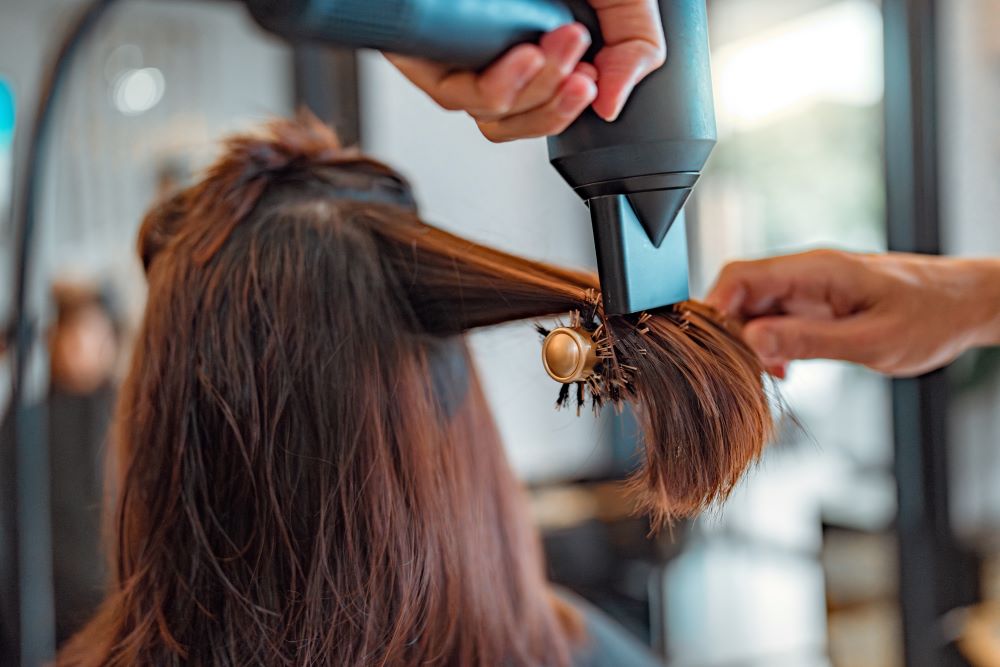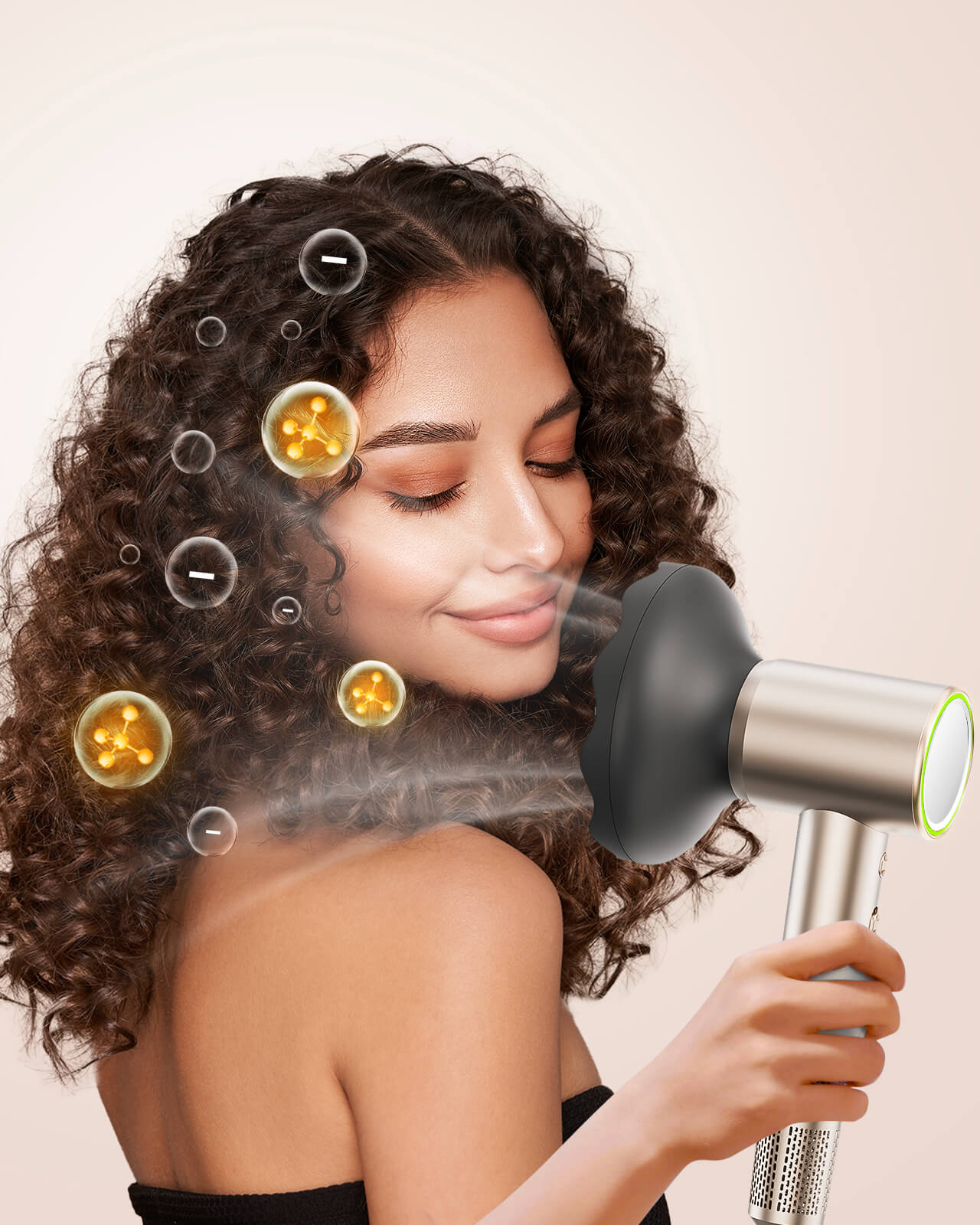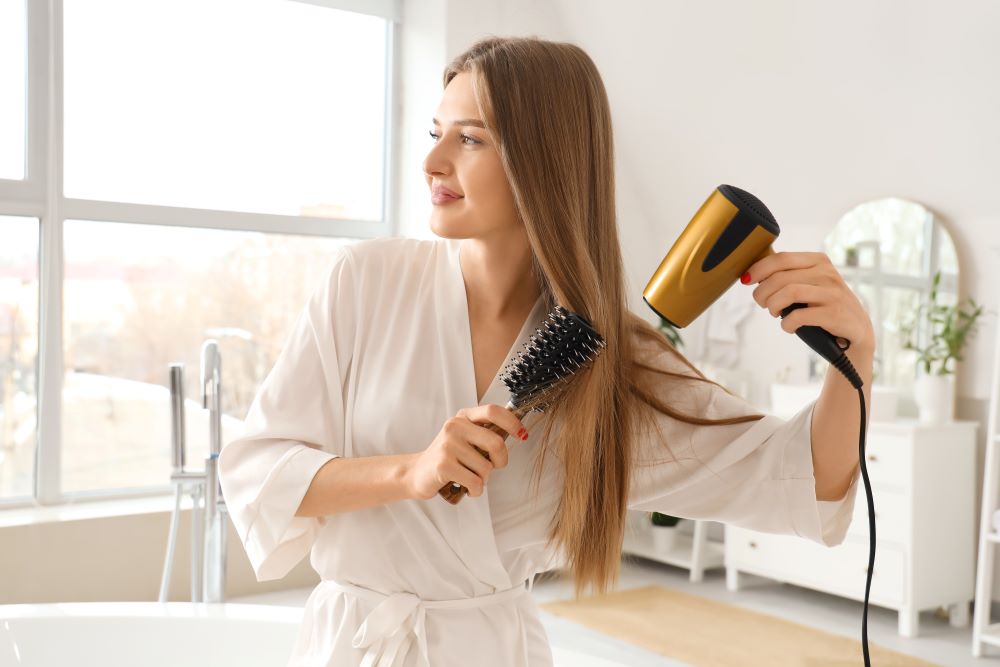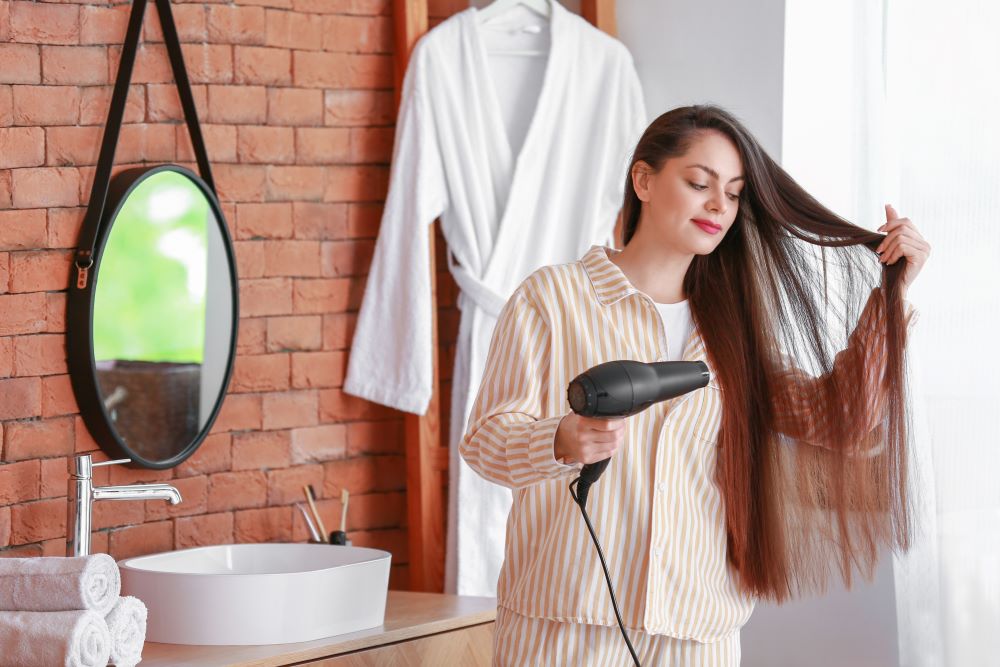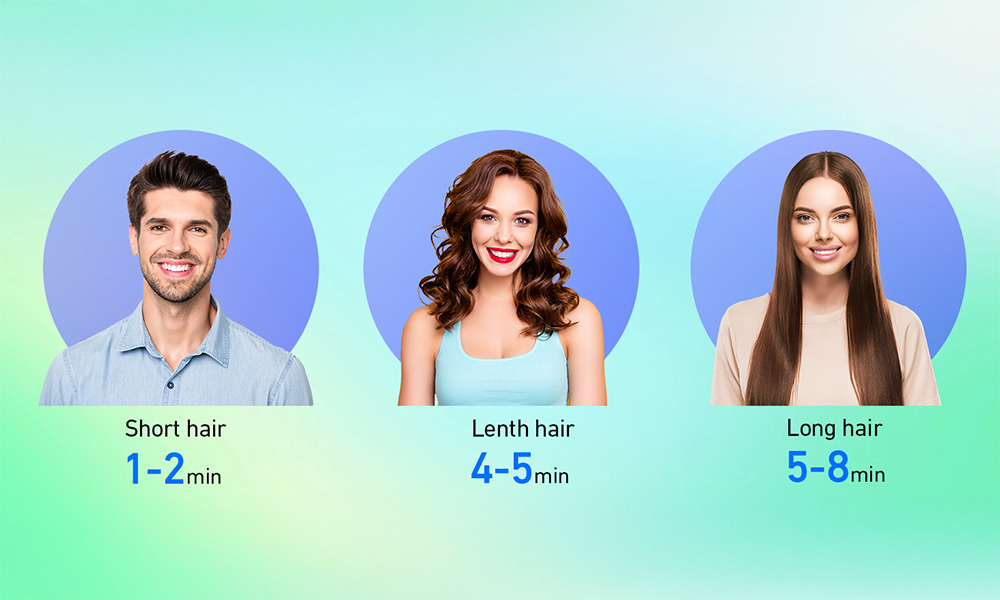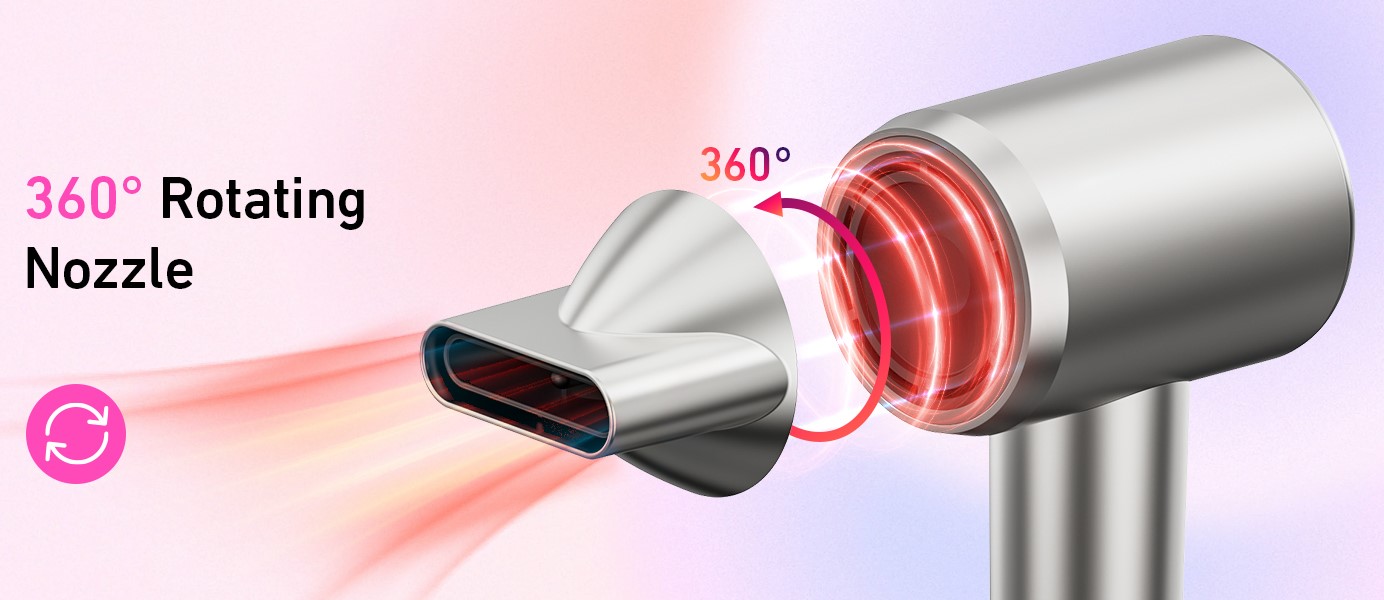
- Home
- Hair Dryer
- Hair Care Tips
- How to Care for Wavy Hair: The Ultimate Guide
How to Care for Wavy Hair: The Ultimate Guide

Wavy hair is a unique hair type that lies between straight and curly, offering versatility but also requiring special care. Understanding how to maintain your wavy hair’s natural texture while keeping it healthy is essential for achieving that effortless, voluminous look many people desire. In this comprehensive guide, we’ll break down all aspects of caring for wavy hair, from the right washing techniques to styling tips, so you can embrace and enhance your waves.
Understanding Wavy Hair

Wavy hair sits between straight and curly, offering a versatile, natural texture. It is defined by loose “S” shapes that add volume, but can also be prone to frizz, dryness, and tangles. Typically, wavy hair falls under three subcategories:
Type 2A: This is the finest and flattest form of wavy hair, characterized by barely-there, loose waves. It has a slight bend and tends to be easy to style but can appear limp if weighed down by heavy products.
Type 2B: These waves are more defined, with more pronounced “S” shapes. Type 2B hair is thicker than Type 2A and often comes with some frizz, especially around the crown.
Type 2C: This type is the thickest and most textured, with waves that border on curls. It can be coarse, frizzy, and difficult to manage, often needing more moisture to stay defined.
The texture of wavy hair can make it both appealing and challenging to care for. Wavy hair tends to be more prone to dryness than straight hair, as its bends prevent natural scalp oils from traveling evenly down the hair shaft. It’s also more likely to tangle, which requires gentle handling to prevent breakage. Additionally, wavy hair can react to humidity by becoming puffy or frizzy. Understanding your specific wave type helps in selecting the right products and techniques to maintain defined, healthy waves, enhancing their natural beauty while minimizing common issues like frizz and dryness.
Choosing the Right Shampoo and Conditioner
The key to caring for wavy hair starts with the basics: washing and conditioning. It’s important to choose products that cater to wavy hair’s specific needs, which usually involve moisture and frizz control.
Look for Sulfate-Free Products
Sulfates can strip the natural oils from your hair, making it dry and prone to breakage. Sulfate-free shampoos are a must for wavy hair, as they cleanse without removing essential moisture, helping to preserve the natural oils that keep your hair healthy and shiny. Opt for a mild, sulfate-free shampoo that won’t weigh your waves down.
Use a Hydrating Conditioner
Conditioner is crucial for keeping your wavy hair hydrated and soft. Look for hydrating conditioners that are formulated to smooth the hair cuticle, reduce frizz, and enhance the definition of your waves. Ingredients like shea butter, argan oil, and glycerin can be very effective at adding moisture without weighing your hair down.
Washing Frequency
Over-washing can lead to dry, brittle hair, especially for wavy hair that thrives on natural oils. It’s best to wash your hair no more than 2-3 times a week to avoid stripping it of moisture. In between washes, you can use a lightweight dry shampoo to refresh your roots and extend the life of your waves.
Detangling Without Damaging Your Waves
Wavy hair can be prone to tangling, especially after washing. It’s important to detangle your hair gently to avoid breakage.
Use a Wide-Tooth Comb
Instead of using a regular brush, which can break your hair and cause frizz, opt for a wide-tooth comb. Detangle your hair while it’s still damp, starting at the ends and working your way up to avoid pulling and breaking your strands.
Apply a Leave-In Conditioner or Detangler
A leave-in conditioner or detangler can make the process of combing through your hair much easier, reducing breakage and frizz. Look for lightweight formulas that won’t weigh your hair down but will still provide the slip needed to smooth out any knots.
Drying Techniques for Wavy Hair
Drying wavy hair correctly is essential to preserve its natural texture, reduce frizz, and maintain definition. Here’s a detailed look at the best methods and tools for drying wavy hair:
1. Air Drying
Air drying is the most gentle and effective method for wavy hair, as it allows the natural wave pattern to form without disruption. After washing, gently squeeze excess water from your hair using a microfiber towel or a cotton T-shirt, as regular towels can cause friction and frizz. Avoid rubbing or twisting the hair, which can lead to damage. While air drying, apply a leave-in conditioner or curl-enhancing cream evenly to damp hair, then scrunch the ends upwards to encourage wave formation. For added definition, flip your head upside down and scrunch again. Let the hair dry naturally for soft, bouncy waves.
2. Plopping Method
The plopping method involves wrapping wet hair in a microfiber towel or a cotton T-shirt to enhance curl formation while reducing frizz. After applying styling products, lay the T-shirt flat, bend forward, and gather your hair into the center. Fold the fabric over your head, securing it at the nape of your neck. Leave it for 15-30 minutes to absorb moisture and define waves. Unwrap gently and allow your hair to air dry completely.
3. Diffusing with a Blow Dryer
If you need quicker drying, use a diffuser attachment on a blow dryer. The diffuser spreads airflow evenly, minimizing frizz and enhancing natural waves. Set the dryer to a low or medium heat to avoid heat damage. Begin by tilting your head to the side and placing sections of your hair into the diffuser cup. Use a “hovering” technique to dry the roots without disturbing the wave pattern. Avoid touching your hair with your fingers, as this can cause frizz.
4. Microfiber Towels
Microfiber towels are a wavy-haired person’s best friend. Unlike regular towels, they reduce friction and absorb water efficiently without disturbing the natural wave pattern. After washing, use a microfiber towel to gently blot your hair, removing excess moisture while keeping the wave definition intact.
5. Avoid Rubbing or Brushing Wet Hair
Wavy hair is most fragile when wet, so avoid rubbing it with a towel or brushing it while wet. Instead, use a wide-tooth comb to gently detangle, starting from the ends and working upwards. This technique reduces breakage and keeps waves intact during the drying process.
Enhancing and Defining Your Waves
Once your hair is clean and dry, it’s time to enhance and define your waves with the right products and techniques.
Curl Enhancing Products
Look for curl-enhancing creams or mousses that are specifically designed for wavy hair. These products can add definition, reduce frizz, and give your waves the volume they need. Avoid products that are too heavy or greasy, as they can weigh your waves down and make them look limp.
Scrunching Your Hair
Scrunching is a simple technique that helps to activate the wave pattern in your hair. After applying your styling products, gently scrunch your hair in an upward motion to encourage the natural curl formation.
Using a Sea Salt Spray
For a more tousled, beachy look, a sea salt spray can be an excellent addition to your styling routine. These sprays give texture and enhance natural waves without making your hair feel crunchy.
Managing Frizz and Flyaways
Frizz is a common issue for people with wavy hair, especially in humid conditions. Here are some tips to keep your waves smooth and frizz-free.
Avoiding Humidity
Humidity can cause wavy hair to puff up and lose its shape. To combat this, look for anti-humidity serums or sprays that help seal the hair cuticle and protect it from moisture in the air.
Regular Trims
Split ends can contribute to frizz and make your hair look unkempt. To keep your waves looking fresh, make sure to get regular trims every 6-8 weeks to remove damaged ends and maintain the shape of your hair.
Nighttime Hair Care for Wavy Hair
How you care for your hair at night can make a big difference in how your waves look in the morning. A proper nighttime routine can help prevent tangles, frizz, and flattening of your waves.
Sleep on a Silk Pillowcase
Silk or satin pillowcases are much gentler on wavy hair than cotton pillowcases, which can cause friction and lead to frizz. The smooth surface of a silk pillowcase allows your hair to glide smoothly while you sleep, reducing tangles and breakage.
Use a Loose Bun or Pineapple Method
To preserve your waves overnight, loosely gather your hair at the top of your head using a silk or satin scrunchie. This technique, known as the pineapple method, helps maintain the shape of your waves and prevents flattening while you sleep.
Maintaining Moisture and Hydration
Wavy hair tends to be more prone to dryness because its texture makes it harder for natural oils to travel from the scalp to the ends. Keeping your hair hydrated is essential for healthy, shiny waves.
Deep Conditioning Treatments
Incorporate a deep conditioning treatment into your hair care routine once a week. These treatments help to replenish lost moisture, repair damage, and keep your waves soft and bouncy.
Using Hair Oils
A lightweight hair oil can work wonders for wavy hair, especially at the ends where dryness tends to be more noticeable. Look for oils like argan oil or coconut oil that can nourish your hair without making it greasy.
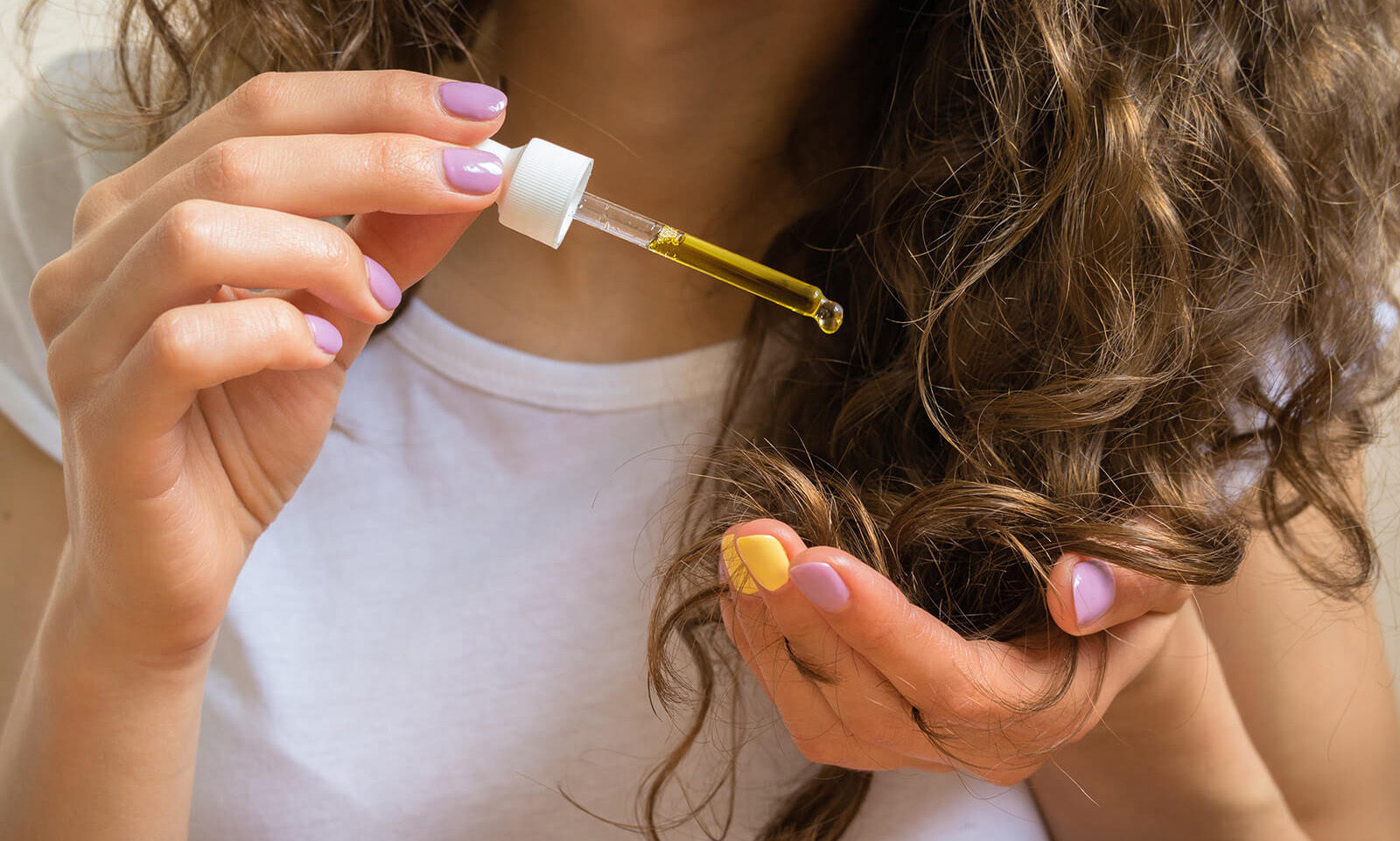
Styling Tools for Wavy Hair
While air drying is the healthiest option for wavy hair, sometimes you may want to use styling tools for a more polished look.
Heat Protection
If you’re using hot tools like curling irons or straighteners, always apply a heat protectant spray first to shield your hair from heat damage. Wavy hair is especially prone to damage from high temperatures, so use tools on a low heat setting to avoid frying your strands.
Diffusing for Volume
Using a diffuser attachment on your blow dryer can help enhance your natural waves while adding volume. Make sure to use a low heat setting and avoid touching your hair too much to minimize frizz.
Final Thoughts on Wavy Hair Care
Caring for wavy hair requires patience and the right products, but with these tips, you can keep your waves looking beautiful and healthy. Remember that every person’s hair is different, so it may take some experimentation to find the perfect routine for your unique texture. By following the advice in this guide and incorporating the right long-tail keywords into your hair care strategy, you’ll be well on your way to achieving soft, defined, and frizz-free waves.
Popular Post

Ultimate Guide to Using a Hair Dryer with Nozzle for Styling
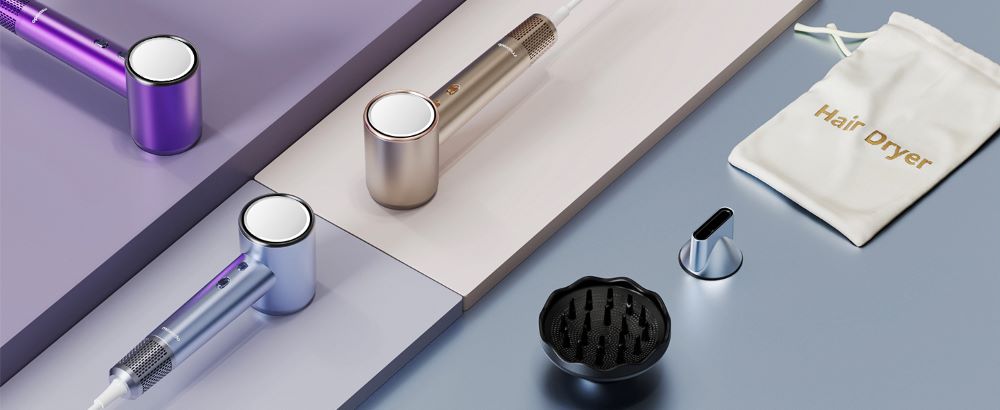
The Benefits of Using a Hair Dryer with a Diffuser
